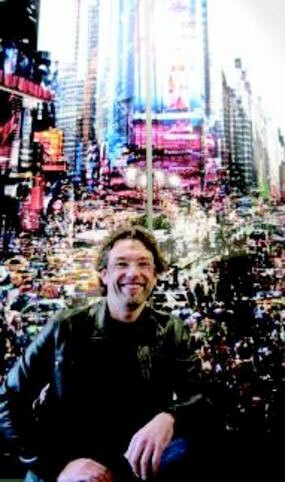Laurent Dequick is a professional architect in his forties. His photographic work has been influenced by architecture, since it is primarily focused on ideas surrounding the contemporary city and more specifically, urban sprawl. The photographer’s message is to accurately convey the impression of freneticism stemming from population density and activity in urban zones: “As you walk down the street, the lights, noises, traffic, hustle and bustle, and mix of smells are so striking that no single shot could capture all of it. So do we have to make choices? I don’t think so and I don’t want to.” To convey in images this “congestion” of urban life, Laurent Dequick does not hesitate to juxtapose, superimpose, or imbricate his shots. He fits together photographs representing architectural complexes, highways, and people, all with the same intensity. He condenses the images like the city condenses the sum of the lives of all of its inhabitants. His style is reminiscent of cubism in its rendering, which verges on abstraction in its representation of constant motion.
Source: Yellow Korner
The passing of time is a fascinating concept which happens all around us, at every single moment of every single day. French photographer Laurent Dequick decided to capture these fleeting seconds in a series of photographs entitled Vibrations Urbaines. Each image is a collective sequence of multiple photographs, superimposed together to visually reflect the chaos and congestion of large urban areas.
The series features colorful and energetic portraits of both New York and Berlin. Viewers might feel a bit hyper as they view the still photograph which so strongly convey the motion of cars zipping past and the life of people rushing by. Dequick says his work is “primarily a reflection on the contemporary city and more specifically the proliferation of modern urban space.” Through these compositions, the artist portrays the constant urban action and excitement that are generally challenging to communicate through just one still photograph.
Source: My Modern Met
